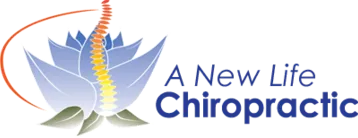Eighty percent of the population will experience back pain at some point in their lives. It causes more lost work days than any other ailment. It can be completely debilitating. Some people experience chronic back pain for much of their lives. Others experience an acute episode of back pain after an auto, work, or sports injury, or when a chronic condition suddenly becomes painful.
Chronic Back Pain
This is the type of pain that someone experiences over a relatively long period of time, typically months or years. The causes of chronic back pain are often structural in nature. An example would be scoliosis, which is an abnormal curvature of the spine. This causes uneven pressure on the sensitive joint tissues. It is often present from an early age. Another condition that causes chronic low back pain is called spondylolisthesis, which is a forward shift of one vertebra on another. Both of these conditions are developmental in nature and can cause back pain from an early age. Whenever we see back pain in a child, we need to evaluate for these types of conditions.
With the passage of time, changes occur in the body that can also lead to chronic back pain. The supportive musculature can become deconditioned. Musculoskeletal imbalances can develop. Old injuries can become problematic. The discs between the vertebrae get drier and thinner, causing pressure on sensitive tissues. The joints of the spine can stiffen, the ligaments tend to thicken, and the spinal canal can get narrower. All of these issues can lead to chronic back pain later in life.
Whether your pain started at an early age or developed later in life, there is almost always one common factor is stiffness. This occurs because the body reacts to pain around the spinal cord is by stiffening the area. It is a primitive survival mechanism. This stiffening leads to the small connecting tissues shortening, further exacerbating the problem. Although the body is attempting to protect the area, all of this reactive stiffening makes the problem worse, leading to a worsening of the condition.
Treatment
What is the treatment for chronic back pain? This depends greatly on the specific causes of your condition. If the joints of the spine are locked, then spinal manipulation is called for. If the tissues are compressed, then spinal decompression is in order. If some muscle groups have become relatively weak, then specific strengthening exercises are necessary. If some of the ligaments are involved, Acupuncture or Microcurrent Electrical Stimulation is often useful. If some muscle groups have tightened over time, then specific stretches are what is needed. Most often the most effective course of treatment includes several of these modalities. The goal is maximum function and improved strength and flexibility, which in turn leads to minimum pain.
Acute Back Pain
Acute back pain is pain that begins relatively suddenly. This can be due to an injury that you notice, or it can start without apparent warning. It can be the result of repetitive micro trauma, postural changes, muscular imbalances, falls, bruises, strains of the muscles, sprains of the ligaments, disc injury, or aging of the spine. It can also be the result of a short leg on one side, flat feet, or other structural issues. Often a chronic condition becomes problematic abruptly, causing an acute episode. If left untreated, acute back pain can progress to chronic back pain. The diagnosis of the cause of acute back pain requires a careful evaluation and examination. X-rays are often very helpful.
Treatment
What is the treatment for acute back pain? This depends on the results of your examination. Treatment is always individualized according to your specific needs. Treatment can consist of spinal manipulation, spinal decompression, Acupuncture, Microcurrent Electrical Stimulation, rehabilitative stretches and exercises, and nutritional supplementation.
- Common (and Not So Common) Back Pain Diagnoses
- Back strain or sprain
- Spinal contusion
- Sacroiliac sprain and/or dysfunction
- Facet Syndrome
- Scoliosis
- Short leg syndrome
- Herniated disc (Herniated Nucleus Pulposus)
- Sciatica
- Disc Degeneration
- Spondylosis
- Spondylolysis
- Spondylolisthesis
- Compression fracture
- Thoracic outlet syndrome
- Lumbar stenosis
- Hemi vertebra
- Zygapophyseal cyst
- Spinal myelopathy





